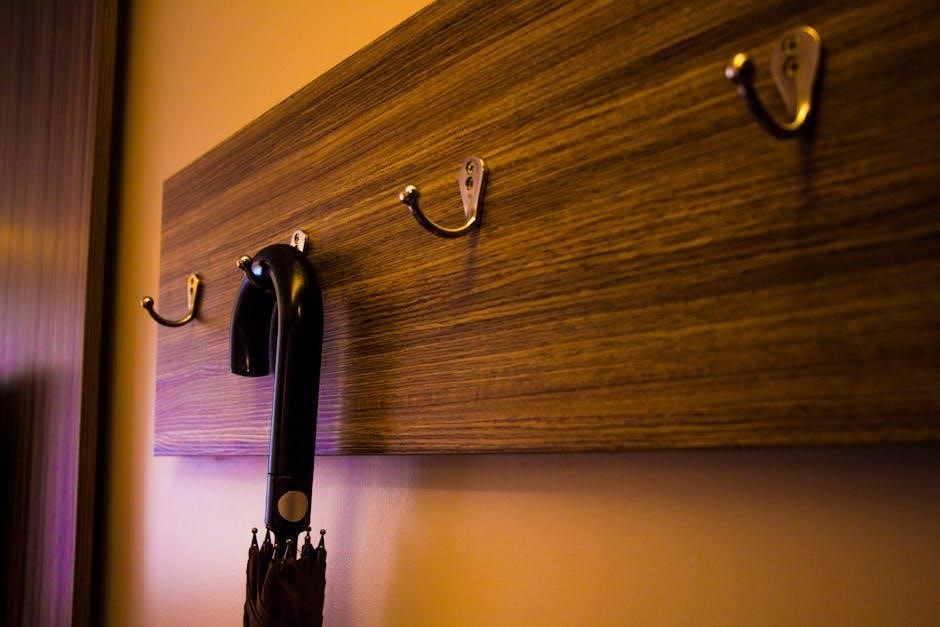Hook Up: Meanings and Usage
The phrase “hook up” has multiple meanings, ranging from technical connections to social arrangements. Understanding the context is crucial for interpreting its intended meaning.
Technical Connection
In a technical sense, “hook up” refers to the act of connecting devices or systems, often involving wires or cables. For example, you might “hook up” a new monitor to your computer using an HDMI cable, establishing a connection for video and audio signals. This usage also extends to utilities, such as “hooking up” a cooker to the gas supply. Essentially, it signifies establishing a functional link between two or more components, enabling them to operate together. The term emphasizes the physical connection process, ensuring that the necessary links are in place for proper operation. It highlights the action of assembling parts of a mechanism, particularly by connecting wires or cables. A “hookup” can also describe a system or network of electrical circuits or equipment designed to operate together seamlessly. From a technical perspective, “hook up” is about establishing a functional connection that allows devices or systems to operate as intended, ensuring the proper flow of signals, power, or data.
Slang Definitions
Beyond its technical meaning, “hook up” carries various slang definitions, often related to casual encounters and relationships. These meanings are context-dependent.
Casual Sex
In slang, “hook up” can refer to casual sex, implying a sexual encounter without the expectation of a committed relationship. This definition is prevalent among young adults and in hookup culture. The term suggests a recreational sexual experience, often without emotional investment or future intentions. It emphasizes physical intimacy without the commitment of dating or a monogamous relationship. The meaning can range from kissing to sexual intercourse, depending on the individuals involved and the context of the interaction. This usage is particularly common in discussions about modern dating and relationships, where casual encounters are increasingly accepted. The term “hookup” in this context often implies a lack of exclusivity and a focus on immediate gratification. It’s important to note that the interpretation of “hook up” as casual sex can vary, with some individuals using it to describe a one-time encounter and others using it for ongoing, non-exclusive sexual relationships. The ambiguity of the term can sometimes lead to misunderstandings, highlighting the importance of clear communication between partners regarding expectations and intentions. This slang definition reflects a shift in societal attitudes towards sex and relationships, where casual encounters are becoming more normalized and accepted.
Non-Committal Relationships
Beyond casual sex, “hook up” can also describe non-committal relationships, where individuals engage in physical intimacy and social interaction without the commitment of a traditional romantic relationship. This type of relationship often involves elements of both friendship and sexual activity, but without the expectations of exclusivity, long-term commitment, or emotional depth. The boundaries and expectations in these relationships are often loosely defined and may vary depending on the individuals involved. Non-committal relationships can provide companionship and physical intimacy without the constraints of a traditional partnership. They may be attractive to individuals who are not seeking a serious relationship or who prioritize independence and flexibility. These relationships often involve open communication and mutual understanding regarding the lack of commitment. The term “friends with benefits” is often used to describe this type of arrangement. However, it’s important to acknowledge that non-committal relationships can sometimes lead to emotional complications if one person develops stronger feelings than the other. Clear communication and mutual respect are crucial for navigating the complexities of these relationships. The rise of non-committal relationships reflects a changing landscape of dating and relationships, where individuals are increasingly exploring alternative models that suit their individual needs and preferences.

Hookup Culture
Hookup culture refers to a social environment that normalizes and accepts casual sexual encounters, often without the expectation of commitment or emotional connection.
Acceptance of Casual Encounters
A key aspect of hookup culture is the widespread acceptance of casual encounters as a legitimate form of social interaction and sexual expression. This acceptance is often driven by factors such as changing social norms, increased access to dating apps and online platforms, and a desire for sexual exploration without the constraints of traditional relationships. In hookup culture, individuals may engage in various forms of physical intimacy, ranging from kissing and making out to sexual intercourse, without necessarily seeking or expecting a long-term commitment. This can lead to a more open and fluid approach to relationships, where individuals are free to explore their desires and preferences without the pressure of conforming to societal expectations. However, it’s important to note that the acceptance of casual encounters can vary depending on individual values, beliefs, and cultural backgrounds. Some individuals may embrace hookup culture as a liberating and empowering experience, while others may find it to be emotionally unfulfilling or even harmful. Ultimately, the decision to participate in hookup culture is a personal one that should be made with careful consideration and respect for one’s own boundaries and values.

Variations in Meaning
The meaning of “hook up” is not fixed and can vary significantly depending on the age of the speaker, the social context, and individual interpretations of the term.
Age and Context
The interpretation of “hook up” is highly dependent on the age group using the term. Among middle schoolers, it might simply refer to kissing or making out. In high school, it often implies more intimate sexual activity. For college students and young adults, the meaning can range from making out to sexual intercourse, one-night stands, or casual flings. The specific actions included under the umbrella of “hooking up” are often left deliberately vague, allowing individuals to interpret the term based on their personal experiences and social circles. Furthermore, the context in which the term is used plays a crucial role. Is it being discussed in a casual conversation among friends, or is it being used in a more formal setting, such as a research study on sexual behavior? The level of formality and the intended audience will influence the speaker’s choice of words and the listener’s understanding of the term. Therefore, it’s essential to consider both the age of the speaker and the surrounding context when interpreting the meaning of “hook up.”

Examples in Sentences
The versatility of “hook up” is evident in its varied usage. It can describe connecting devices or arranging social encounters, depending on the specific context.
Connecting Devices
In a technical sense, “hook up” refers to the physical act of connecting devices. This could involve anything from connecting a new monitor to your computer to setting up a complex network of electrical circuits. For example, you might say, “I need to hook up the new printer to the laptop,” or “Can you help me hook up the stereo system?” The phrase emphasizes the physical connection and establishment of a working relationship between the devices. It implies bringing the devices into a state of functional unity. Whether it involves wires, cables, or wireless connections, “hook up” describes the process of making the necessary links for the devices to communicate or function together. This usage is common in everyday conversations about technology and electronics, highlighting the practical aspect of establishing connections. The phrase is versatile, applicable to simple connections like plugging in a lamp or more complex configurations such as setting up a home theater system. It is a straightforward way to describe the act of joining devices for a specific purpose, ensuring they work in harmony.
Social Arrangements
Beyond its technical meaning, “hook up” also describes social arrangements, often implying a casual or non-committal connection. This can range from meeting up with friends for a casual lunch to a more ambiguous arrangement involving intimacy. For instance, “Let’s hook up for coffee next week” suggests a friendly get-together without any romantic implications. However, the phrase can also refer to a casual sexual encounter, a one-night stand, or a fling, depending on the context and the individuals involved. The ambiguity of “hook up” in social contexts contributes to its widespread use, as it allows individuals to imply a range of possibilities without explicitly defining the nature of the relationship. It is essential to understand the nuances of the conversation and the relationship between the speakers to accurately interpret the intended meaning. The phrase can be used to suggest a low-pressure meeting, a potential romantic interest, or simply a desire for companionship, making it a versatile term in modern social interactions. The flexibility of “hook up” reflects the evolving nature of relationships and social norms.

Related Terms
Several related terms share similar connotations with “hook up,” offering alternative ways to describe varying degrees of intimacy and connection between individuals.
One-Night Stand
A one-night stand represents a single instance of sexual activity between two individuals who are not in a committed relationship and do not anticipate any further encounters of a romantic or sexual nature. This term implies a lack of emotional investment and a focus on physical intimacy for a short duration. Unlike a “hook up,” which can encompass a broader range of activities, a one-night stand specifically refers to sexual intercourse. The motivations behind engaging in a one-night stand can vary, ranging from a desire for physical release to a sense of adventure or experimentation. However, it is typically characterized by a lack of commitment and a clear understanding that the encounter is unlikely to lead to anything more. The term carries connotations of casualness and transience, emphasizing the temporary and non-committal nature of the interaction. Considerations surrounding safety, consent, and communication are paramount in such situations, as with any sexual encounter. Cultural attitudes towards one-night stands vary, with some viewing them as a harmless expression of sexuality and others considering them to be morally questionable. Regardless of personal opinions, it is important to approach such encounters with respect for all parties involved and a clear understanding of expectations.
Making Out
“Making out” typically refers to a level of physical intimacy that goes beyond simple kissing but usually stops short of sexual intercourse. It often involves extended kissing, touching, and caressing, and can be seen as a form of foreplay or a way to express attraction and desire. The term is often used among younger people, particularly teenagers and young adults, and can represent a stage in the development of a romantic or sexual relationship. While the specific actions involved in “making out” can vary depending on individual preferences and boundaries, the general concept involves a heightened level of physical intimacy and arousal. It can be a pleasurable experience in itself, or it can serve as a prelude to further sexual activity. The term “making out” can also be used more broadly to describe any type of non-penetrative sexual activity, depending on the context. It’s important to communicate clearly with your partner about your comfort levels and boundaries when engaging in any form of physical intimacy, including making out. Consent is always essential, and it’s important to respect your partner’s wishes and preferences. Making out can be a fun and exciting way to explore your sexuality and connect with someone you’re attracted to, but it should always be done in a safe and consensual manner. The intensity and boundaries of “making out” are highly subjective and depend on the individuals involved.